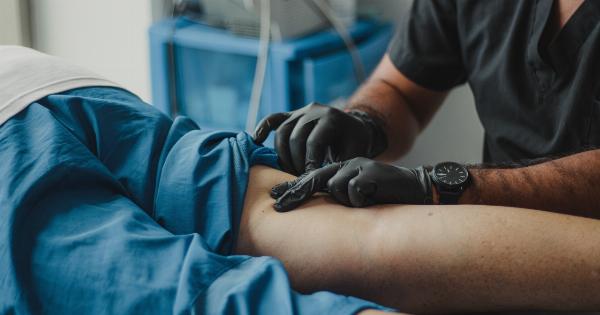An ankle sprain can be a painful and debilitating injury that can occur when the ligaments that connect the bones in the ankle joint are stretched or torn.
This type of injury can happen during physical activity, such as running or jumping, or from everyday activities like stepping off a curb or slipping on a wet surface.
While there are different degrees of ankle sprains, ranging from mild to severe, it’s essential to know how to treat the injury as soon as possible to reduce pain, swelling, and the risk of arthritis or chronic ankle instability.
1. Rest and Ice
If you experience an ankle sprain, the first step in the treatment process is to rest your ankle. Avoid any activity that involves bearing weight on the injured foot.
You can utilize crutches to help you move around without putting pressure on the affected foot.
After rest, you should apply ice to the injury every 20-30 minutes at a time. You can use a cold compress or wrap an ice pack in a towel and apply it to the affected area. Make sure to apply ice within 48 hours after the injury has occurred.
2. Compression
Compression is essential in reducing swelling of the ankle and providing additional support for the joint. You can use an elastic bandage to wrap the injured ankle but not too tight to cut off circulation.
Make sure to re-wrap the bandage every day to make sure the pressure stays consistent as the swelling goes down.
3. Elevation
Elevation helps to improve blood flow and reduce swelling by raising the foot above the heart level. The goal is to position your ankle above your heart level for at least 2-3 hours a day.
This can be done while sleeping, sitting or lying down; ensure that your ankle is getting at least some elevation.
4. Physical Therapy
Physical therapy can be a critical component in helping an individual recover from an ankle sprain. A physical therapist can recommend various corrective exercises that can help restore strength, flexibility, and range of motion.
Moreover, by working with a therapist, you can learn the proper technique of stretching and strengthening the muscles around the ankle to prevent future injuries.
5. Medication
Medication is not necessary for treating an ankle sprain, but it can help to reduce pain and inflammation. You can take over-the-counter pain medication, such as acetaminophen or ibuprofen, to alleviate the symptoms.
However, it should not be the only source of treatment used and should be used only while supervised by a physician.
6. Surgery
In severe ankle sprain cases, surgery may be recommended. This type of surgery will help repair the damage done to the ligaments that have received a significant injury.
Surgery is usually done through arthroscopy, a minimally invasive procedure that can minimize the risk of complication. Speaking with your doctor will determine if surgery is the best option for you.
7. Braces or Casts
There are a few different options when it comes to ankle braces or casts. Depending on the severity of your injury, you might need to wear a cast or a structured boot to protect the ankle and keep pressure off of the affected ligaments.
Your doctor should be able to suggest the best treatment for you that will allow you to heal properly.
8. Proper Shoes
Proper shoes can help prevent ankle injuries in the future.
Shoes with proper support and protection and, a low heel better distributes body weight and can help reduce the risk of ankle sprains when performing various physical activities – especially in contact or team sports. Sneakers with sufficient cushioning and supportive straps or laces – will also reduce the chances of a future sprain in day-to-day life.
9. Time & Patience
Finally, it’s vital to be patient and allow yourself the appropriate time to heal.
The length of time it takes to recover from an ankle sprain will vary depending on severity, age, and overall health, all of which your doctor can share with you during the diagnosis. More serious sprains will take longer to heal, and trying to push through the injury can result in further damage. Give your body time, rest, and take good care of yourself during the recovery process.
10. Prevention
After recovering from an ankle sprain properly, there are various prevention methods to keep your ankle joints healthy, such as properly stretching before performing physical activities.
Additionally, you can look to engage in movements that will strengthen your ankle and lower leg muscles. Also, continue to use proper footwear and maintain good posture.





























